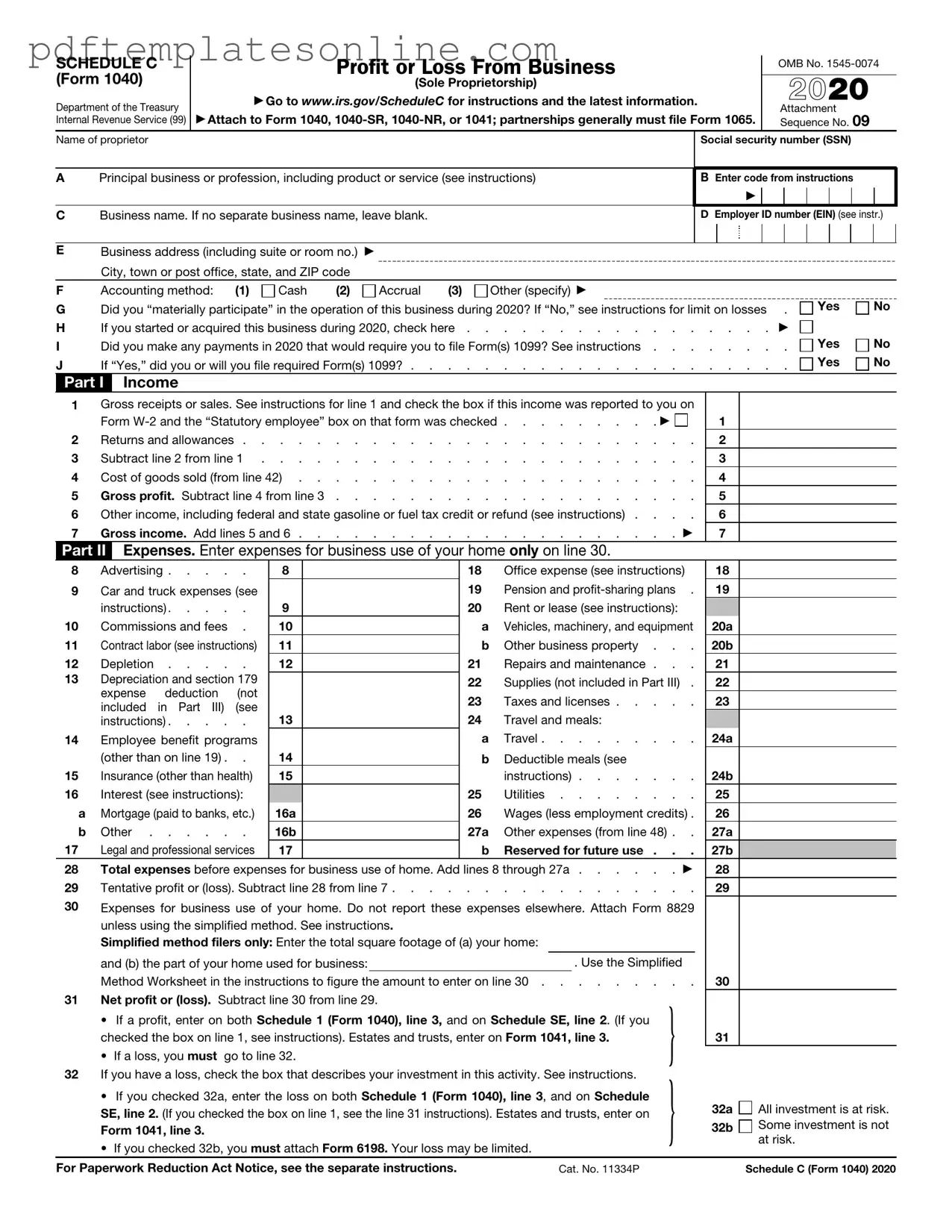When filling out the IRS Schedule C (Form 1040), many people make common mistakes that can lead to issues down the line. One frequent error is failing to report all income. It’s essential to include every dollar earned from your business. Even small amounts can add up and should be accounted for to avoid penalties.
Another mistake is misclassifying expenses. Some individuals may not know which expenses are deductible. It’s important to understand what qualifies as a business expense versus personal expenses. Keeping clear records can help ensure that only legitimate business costs are reported.
People often overlook the importance of accurate record-keeping. Without proper documentation, it becomes difficult to substantiate claims made on the Schedule C. Receipts, invoices, and bank statements should be organized and kept for at least three years in case of an audit.
Additionally, many individuals forget to account for self-employment taxes. Unlike traditional employees, self-employed individuals are responsible for paying both the employer and employee portions of Social Security and Medicare taxes. This can lead to an unexpected tax bill if not planned for in advance.
Another common error is not taking advantage of the Qualified Business Income deduction. This deduction can significantly reduce taxable income for eligible businesses. However, many people do not realize they qualify or fail to calculate it correctly, missing out on potential savings.
Lastly, some filers neglect to sign and date the form. This may seem minor, but an unsigned form can lead to delays in processing or even rejection. Always double-check that all required signatures are included before submitting.
